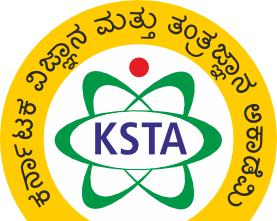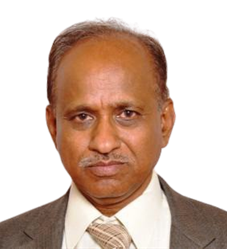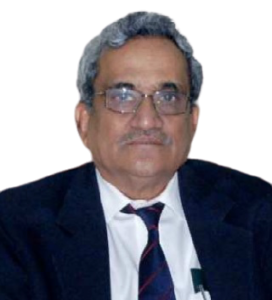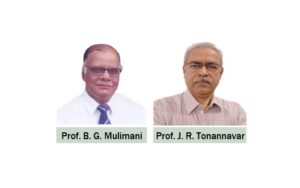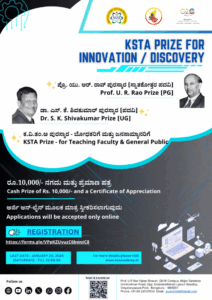All About Human Brain
6 min read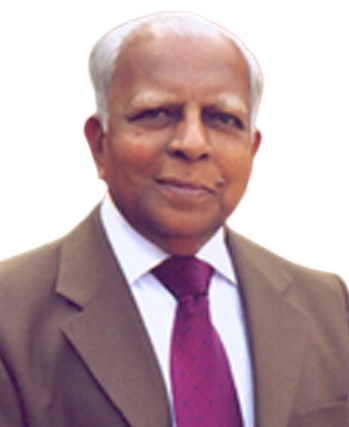
Nadoja Dr P S Shankar
Emeritus Professor of Medicine
Rajiv Gandhi University of Health Sciences
KBN University, Kalaburagi
drpsshankar@gmail.com
Lord Byron has said that the dome of thought and the palace of the soul is in the head. It gets the credit because it contains a wonderful organ- the Brain- which is considered ‘a monument where human knowledge is engraved!’
Human brain is the most complex structure in the body and its intricate development has enabled man to rise to the supreme commanding position in the world. It consists of innumerable nerve cells and their fibers. It weighs around 1300 Gms and the weight has no relation with the mental capacity of the individual.
Though the brain weighs only 1/50th of the total body weight, it requires 1/5th of blood pumped out of the heart during every beat and its requirement of oxygen and glucose is very high. There has to be a continuous supply of these vital substances for its activity. Any curtailment in this supply leads to death of the cells and loss of consciousness and paralysis of the body. Nature has taken adequate precaution to maintain a constant blood supply to the brain. There are two arteries arising from the aorta and they pass on either side of the neck and reach the base of the brain. Two other branches from the arm vessels pass through the backbone as vertebral arteries and reach the base of the brain where they unite in the form of a round loop and supply blood to the different parts of the brain. On branching the vessels do not communicate with each other and are called end-arteries. Hence any curtailment or obstruction in the blood supply will have deleterious effect.
Our intelligence, memory and thinking are located in definite parts of the brain. The sensations are perceived and interpreted here. Our behavior and personality are influenced by its activity; and all our experiences are preserved here. Often brain is compared to the telephone exchange. A variety of information will be reaching it constantly and it sorts them out. It takes decisions quickly and communicates it through motor system and exhibits a suitable response. It is a common experience while walking, if we place our foot on a thorn or even on a soft thing in night, we withdraw the foot quickly or while driving a car if somebody comes in front suddenly, we press the brakes immediately. Though the foot feels or eyes observe these abnormal sensations, the impulses reach the brain which in turn sends out the signals to the foot to act quickly. When we are awake, a variety of information from the eyes, ears, tongue, nose and the skin reaches the brain and brain processes and interprets them. Then we appreciate discretely them as sight, sound, taste, smell or sensation of touch, pain or temperature.
The brain is well protected in the thick bony skull case and it consists of cerebrum, cerebellum and brain-stem. The cerebrum occupies most of the region. It forms the highest controlling centre. It is made up of two hemispheres which are separated by a deep fissure; however, both halves are connected by a bridge of white fibre matter-corpus collosum. The soft structures of both halves are of similar size and shape. The hemisphere presents many intricate folds and deep grooves.
Each hemisphere has been divided into important lobes like frontal in the front, occipital in the back, parietal above and temporal in the sides. They have different functions. The visual impressions gathered through the eyes are interpreted in the occipital lobes and it enables us to recognize the size, shape and colour of the objects. Hence this lobe is the real eye. In the temporal lobe, the centres concerned with hearing and speech are located. The power of speech has taken the man to a supreme position among living beings.
The frontal lobes are important for voluntary movement, expressive language and for managing higher level executive functions. They are important for processing and interpreting somatosensory input. For example, they inform us about objects in our external environment through touch (i.e., physical contact with skin) and about the position and movement of our body parts (proprioception). The parietal lobes are also responsible for integrating sensory input, and construction of a spatial coordinate system to represent the world around us. The parietal lobe is vital for sensory perception and integration, including the management of taste, hearing, sight, touch, and smell
Though the cerebral hemispheres are alike, the speech centre is located in the left side in the right-handed individuals, and vice-versa. You might have observed the loss of ability to speak in right-handed individuals having paralysis of the right side of the body. It is because the seat of the disease lies in the left hemisphere. In a majority of individuals the left hemisphere functions as the dominant hemisphere. The taste sensations are recognized in the parietal lobe and it is through this region we can feel the consistency, size, shape and weight of a substance kept in the hand even without seeing it. The frontal lobes are concerned with our higher functions like judgment and decision, reasoning, emotion and control, imagination and a variety of abilities of the mind.
The important nerve cells are located in the outer part of the gray matter of cerebrum and the inner white matter is made up of nerve fibres. These cells control the functions of various muscles and glands and are connected with the spinal cord through the brain stem.
There are 12 pairs of cranial nerves which have direct connection with the brain. They have been numbered serially. They are sensory, motor, and mixed. There are nerves carrying sense of smell, sight, sound, taste and general sensations from face and scalp and throat. Other nerves supply the muscles of the eye, jaw, facial expression, neck and tongue. The tenth nerve is not confined to the mouth cavity and it descends into the chest and abdomen and it is concerned with the acts of swallowing, talking, slowing of the heart rate and movements of the stomach.
The midbrain, pons and medulla oblongata together like a stalk form the brain stem and the spinal cord emerges like a tail through a big opening in the base of the skull. The medulla oblongata appears as the expanded end of the spinal cord and it is connected with the pons above. The nerve centres in the medulla control the involuntary functions of the heart, respiration, and swallowing. It is in this region the nerve fibres controlling the movement of the body cross to the opposite side. Because of this the right cerebrum controls the movement of the left side of the body and vice-versa. The fibres from the cerebellum and cerebrum pass through the pons and it has also the nuclei of sixth and seventh cranial nerves.
The midbrain is situated between the pons and cerebrum. It acts as a relay station for the sensory impulses. The sensations from different parts of the body terminate in thalamus deep in the brain. The nerves coming from the eyes meet in the midbrain and the fibres in the middle of the nerve cross to the opposite side. There are also collection of nerve cells regulating the body temperature, appetite, wakefulness, sleep, water balance and sexual urge.
The little brain, cerebellum is situated in the back of the skull below and behind the cerebrum. It has two lobes and exhibits many narrow folds simulating a kisan’s turban. A bridge of tissue connects the two lobes. This highly cellular structure is connected with cerebral hemispheres above and spinal cord below. It co-ordinates all the movements performed by different groups of muscles. It maintains our balance, while standing and while walking.
We use our brain for all our activities and thinking. Goldsmith in his poem ‘Deserted village’ has summed up its functions as ‘And still they gaz’d, and still the wonder grew: that one small head could carry all he knows’.
– Nadoja Dr P S Shankar
Emeritus Professor of Medicine
Rajiv Gandhi University of Health Sciences
KBN University, Kalaburagi
drpsshankar@gmail.com
